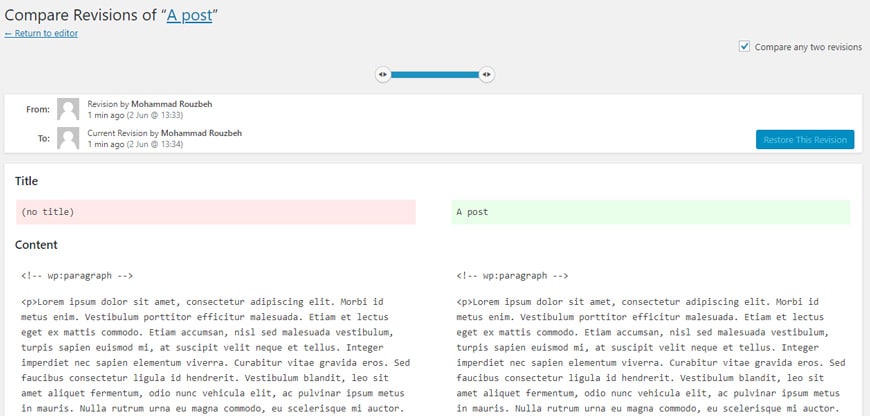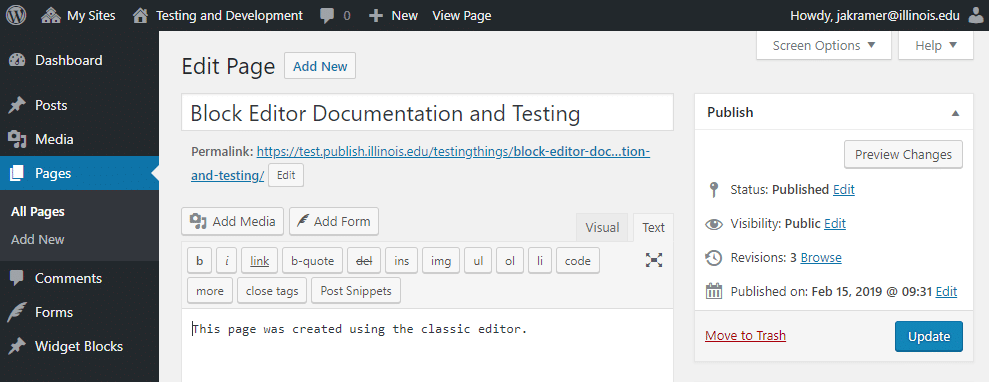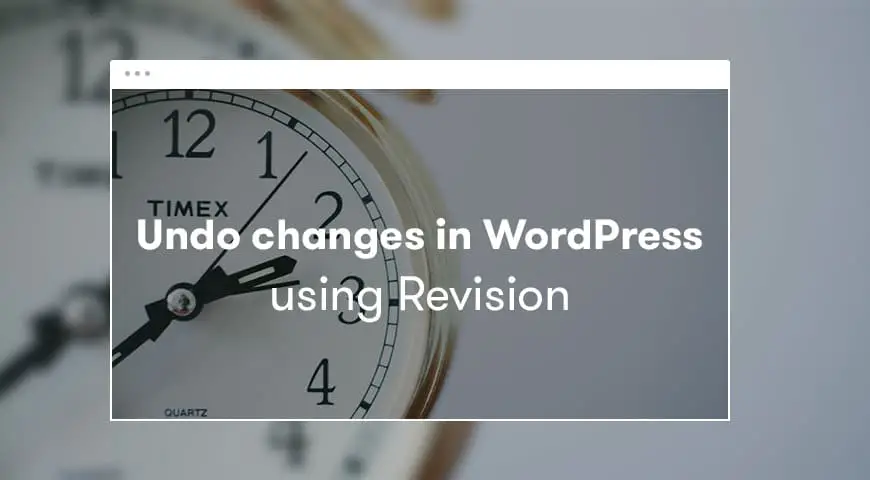What if you need to undo changes you’ve made to your post in WordPress. With the help of the “Revision” feature, you can do just that. In fact, the revision allows you to undo any changes you have made to your post(s). In this article, we will teach you how to use revision to undo changes in WordPress.
What is revision in WordPress?
A system has been built into WordPress that saves the history of each post. WordPress will temporarily store the draft that you are making. This feature is called “Auto Save” and it will occur every 60 seconds that you spend writing/making a post, and previous saves will be replaced by the latest version.
On the other hand, WordPress will save your pages and posts whenever you click on “save”, “update” and “publish”. Unlike its default saving method, these will be saved and store in your database.
You can see every change done to your posts and if needed undo them.
When do we use revision?
There are several uses to undo changes in WordPress. Writing high-quality content may require multiple edits. When editing content, with the help of “Undo” you can revert changes immediately. But once you close the editor, you no longer can use this function. In cases like this, you can use the revision function to revert your changes.
Also, with this function, you can make changes to your drafts and select the best one and schedule the publish date.
Another use of revision is when you have multiple authors for your website. In such cases, you can see all the content and changes made by each author and editor.
How to undo changes in WordPress posts using revision?
There are several ways to undo changes in WordPress. Installing WordPress backup plugins such as BackupBuddy or using phpMyAdmin to recover databases or manually doing so using FTP. These are three of the many ways you can use. But in this article, we talk about the easiest way to undo changes in WordPress, which is very simple and it will show you different options to choose from.
In WordPress, you can see revisions in the “Document” tab on the right side of the page.
When you enter the new page, by clicking on “Revisions” you will enter the specific page to see the saved revisions of the post.


You will also see the latest version of the post next to the original and published post. If you want to access other revisions, you will have to click on either “next” or “previous”.
The difference between each content is distinguished in green and pink colors. In addition, you can see at the top of the page, who has applied these changes and who was the author. Also, the date which the revision was saved is displayed.
WordPress even specifies whether the revision is saved by default or saved as a draft.
Another feature provided in this section is the ability to compare two revisions with each other. On the top right corner of the page, you will see “compare any two revisions” option. By enabling this option, two revisions will be displayed. However, you can change them to the revisions you desire to compare. Then you can compare them with one another.
If you want to select a specific revision to replace the original content, you can easily do so by clicking on “Restore This Revision” or “Restore This Autosave”. These two options will appear depending on whether your revision was autosaved or saved as a draft. If you select either of them, that revision will be selected as the original content and you can even keep it as a draft.
Keep in mind, by doing so, your original content won’t be deleted. In fact, it will be saved in the revision section of your WordPress.
How to undo changes in older versions of WordPress?


If you are using previous versions of WordPress (before version 5.0). You can see the revision option in the page for editing posts, in the “Publish” section on the right side. By clicking on “Browse” you will be directed to the revision page. Aside from this part, every other functionality is the same as version 5.0 or above.



